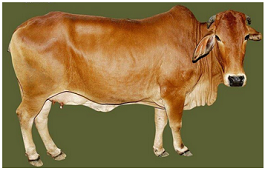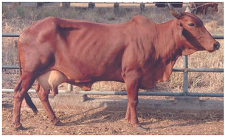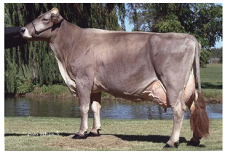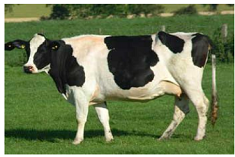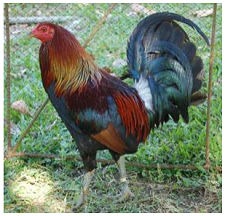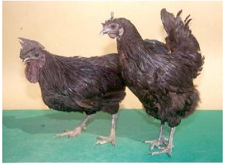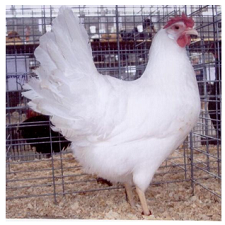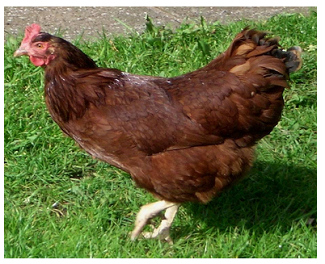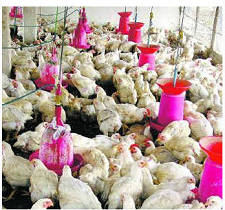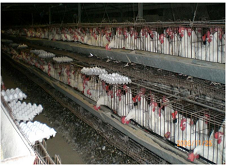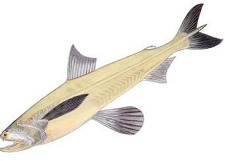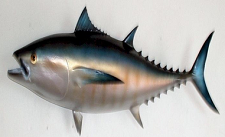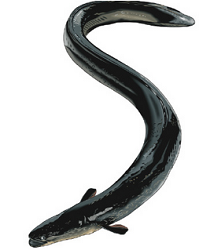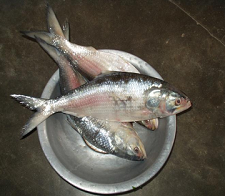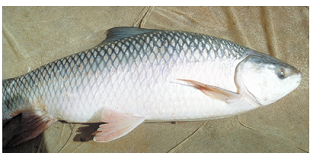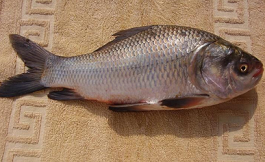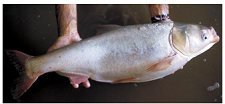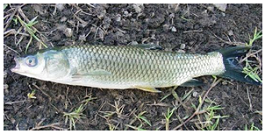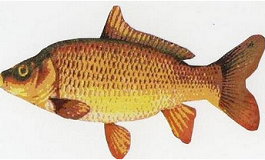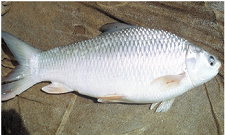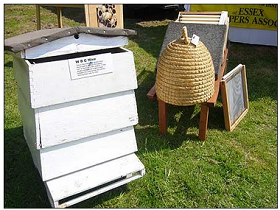
ANIMAL HUSBANDRY
Improvement of food resources of Class 9
ANIMAL HUSBANDRY
Science which deals with the scientific management of farm animals including their feeding, breeding, weeding and heeding (disease control) is called as Animal husbandry. Animal food mainly comes from:
- Milk : from cattle such as cow, buffaloes, goat, camel.
- Egg : from birds (poultry).
- Meat : animals like pigs, fishes, poultry etc.
- Honey : from honey bees.
There are four main practices involved in keeping of animals or animal husbandry.
- Breeding : It is done to obtain animals with desired characters. Through breeding, we can develop high milk – yielding and high meat- yielding cattle.
- Feeding : It deals with the study of proper food (called feed), mode and time or feeding of different animals
- Weeding : This concerns with the elimination of uneconomical animals.
- Heeding : It means the proper care and management of animals.
Most notable effort for dairy development & milk production in India is being carried out by NDDB (National Dairy Development Board) and is called “operation flood“ to increase milk production. It has resulted in white revolution in India.
TABLE NUTRITIONAL VALUES OF ANIMAL PRODUCTS |
|||||
|
Animal products |
Nutrients (%) |
||||
|
Protein |
Fat |
Carbohydrat |
Minerals |
Water |
|
|
1. Cow |
4.0 |
3.6 |
3.5 |
0.7 |
87.2 |
|
2. Egg |
13.0 |
12.0 |
Traces |
1.0 |
74.0 |
|
3.Meat |
21.1 |
3.6 |
Traces |
1.1 |
74.2 |
|
4. Fish |
19.O |
2.5 |
Traces |
1.3 |
77.2 |
White Revolution:
Just like the green revolution in case of crop plants, the increase in milk production has been possible just like the green revolution in case of crop plants, the increase in milk production has been possible due to the launching of countrywide programme called ‘operation flood’ which resulted which resulted in the white revolution in India. This operation involved use of New improved high milk-yielding crossbreeds of milch animals and following the practices of animal husbandry providing them proper feed and health care. Dr.V. Kurien is credited with the designing and implementation of the largest dairy development programme – the operation flood, and sharing in of the white revolution in India. He is known as the father of white revolution and is the founder chairman of the National Dairy, Development Board (NDDB). Silver revolution refers to the tremendous increase in egg production, while blue revolution to the fish production.
Various types of animal farming are:
CATTLE FARMING :
Cows and bullocks form the backbone of Indian Agriculture and play an important role in the rural economy. The two species of cattle in India are cow (Bos indicus) and buffalo (Bubalus bubalis).
Purpose of cattle farming:
Cattle farming is done for two purposes:
- Dairy animals : These animals called milch animals are kept for obtaining milk. These include cow, buffalo, goat, camel and yak. These animals provide us milk and milk products.
- Draught animals : These are animals used in agriculture for work and transport. Example is horses, elephants, bullocks, etc. Draught animals are also used for tilling and irrigation.
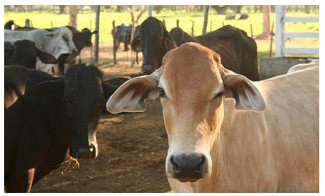
A cattle farm
A breed is a group of animals of common origin within a species that has certain distinguishing characteristics not found in other members of the same species.
Breeds of Cows :
According to Indian methology cows are called Gomata, as they provides milk. They also provide bullocks for transportation and farming purpose. There are various types of breeds found in our country but 30 types of breeds are important which are useful for milking purpose. Some of them are good only for doing work and are used as draught animals. Based on the utility, the breeds of cow are classified into three categories :
1) DRAUGHT BREEDS
These breeds are strong and sturdy. They are the beast of burden used for ploughing land and transporting material from one place to another. They give less milk. Some indigenous draught breeds are Nageri, Malvi and Hallikar.
2) DAIRY BREEDS
Consist of high milk-yielding cows; the bullocks of these breeds are poor for draught purposes.
3) GENERAL UTILITY BREEDS (DUAL PURPOSE BREED)
In these breeds, the cows are good milk yielders and bullocks are good for draught work. Some indigenous breeds used for this purpose are Haryana, and Tharparkar.
Generally, our farmers domesticate mainly draught and dual purpose breeds for milk and agricultural work. The dual purpose breeds serve both the purposes, while draught breeds are mainly employed in agricultural work. The dairy breeds are generally reared by dairy owners.
The dairy cows have three types of breeds, Indigenous breed (Indian breed), Exotic breed (foreign breed) and Cross breed.
Some dual purpose breeds of cow such as Deoni, Dangi. Tharparkar and Haryana are also fairly good milk yielders.
Indigenous breeds : The indigenous breeds of dairy cows have three varieties. These varieties are
Gir : It is the native breed of Gir forest in Gujarat. It is medium in size and fairly good milk yielders.
Sahiwal : It is a large breed with a heavier built. This breed of cow is superior to other indigenous breeds of dairy cows.
Red Sindhi : It is a medium sized breed. It is red in colour with light and dark shades.
Exotic breeds : There are foreign breed of cows that have been successfully used for cross breeding in our country. These are :
- Jersey - From Jersey (USA). It is the original breed of island of Jersey.
- Holstein-friesian - It is a breed from Holland
- Brown Swiss - It is a dual purpose breed from Switzerland.
Cross breeds or Improved breeds : In our country, the improved breeds of dairy cow have been developed at the National Dairy Research Institute (NDRI) Karnal, Haryana. These high milk yielding breeds have been developed through cross breeding with exotic breeds. The successful cross breeds are
- Karan-Swiss : Developed as a result of cross between Brown swiss and Sahiwal.
- Karan-Fries : Developed as a result of cross between Holstein-friesian and Tharparkar.
- Frieswal : Developed as a result of cross between Holstein-friesian and Sahiwal.
The new cross breeds of cow yield two or three times more milk than indigenous cows. Karan fries cow gives about 3,500 litres of milk.
|
Sahiwal cow |
Red Sindhi cow |
|
Brown swiss cow |
Holstein-friesian cow |
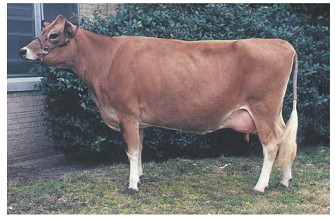
Jersey cow
Breeds of buffaloes : Murrah, Meshsana and Surti are some common breeds of buffaloes reared in India.
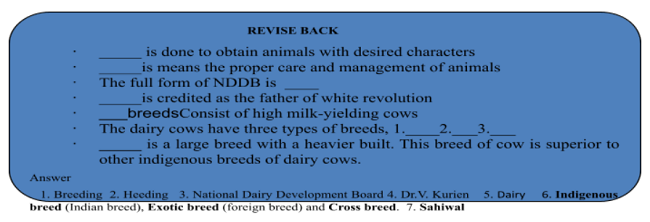
Milk production:
Production of good quality milk depends on several factors. They are:
- Influence of breed : Some exotic breeds like jersey cows (native of Jersey, U.S.A) produce on an average of 60 litres of milk in a day whereas local breeds like Red Sindhi and Sahiwal produce average of only 6 – 8 litres of milk per day. However, the milk of Red Sindhi contains more fat than Brown swiss (exotic breed).
- Duration of Lactation period : The period from the time the calf is born until the cow ceases to give milk is called the ‘Period of lactation’. The lactation period of Red Sindhi cow is 230 – 345 days whereas lactation period of the exotic breed is longer.
- Other factors : Seasonal changes affect milk production such that the quality of milk is better in cold weather and decreases in warm weather. The physical health and variation in feeds also affect milk production.
Breeding for the desired quality:
Desired quality can be obtained by selective cross breeding techniques. This is done by natural or artificial insemination method. A local bull is selected for disease resistance and an exotic cow is selected for prolonged period of lactation and high yield of milk and they are cross breed.
Some successful cross-breeds on these lines are:
- Karan Swiss : It is a cross-breed of Brown Swiss and Sahiwal.
- Karan Fries : It is a cross-breed of Holstein-Friesian and Tharparkar.
- Frieswal : It is a cross-breed of Holstein-Friesian and Sahiwal.
Methods of breeding animals : There are two methods of breeding animals:
- Natural method of breeding : It is a traditional method of breeding. It takes place by cross-breeding between the desi (indigenous cow) and the bull of high milk yielding exotic breed by the natural physical mating process. E.g. Sahiwal, Holstein-friesian.
- Artificial method of breeding : Scientifically, this method is called artificial insemination. The process of injecting the semen obtained from desired male bull of high milk yielding breed into the genital or reproductive tract of female animal during heat period is called artificial insemination. It generally gives improved breeds. This method is widely used to improve the qualities of cow, buffaloes, poultry, horse, sheep, goats and pigs.
Proper housing:
Proper housing provides increased production of high quality milk and proper disease control. It protects them from sun burns, rain, hot and cold winds, etc. Besides proper shelter, regular brushing to remove dirt and loose hair is also required. The floor of the cattle shed should have a slope connected with perfect drainage system which makes the shelter dry and free from dirty water.
Feeding:
The food required by dairy animals is called feed which includes palatable, laxative, appetizing and balanced ration with sufficient green and all nutrients in proper amounts. They also must get large quantity of water for milk production.
Dairy animals require food for two basic purposes:
- To maintain a healthy body so as to perform all life activities.
- To produce milk during lactation period.
A normal feed of dairy animals (cows and buffaloes) consist of two kinds of components.
- Roughage : It contains mostly fibres which come from hay (straw of cereals or Bhusa), green fodder (e.g. berseem, cow pea, etc) and silage.
- Concentrates : It consists of mixture of less fibrous substances and protein, fat carbohydrate, vitamins, mineral rich substances.
Cattle need balanced rations containing all the nutrients in proportionate amounts. Besides such nutritious food material, certain feed additives containing micronutrients promote the health and milk output of dairy animals.
Diseases of cattle:
Just like humans, animals also suffer from various diseases. Cattles reared for food not only need protection against weather and predators but also against diseases. Domestic animals often suffer from diverse diseases, either caused due to nutritional deficiencies, or by infections from bacteria and worms. The diseases adversely affect the production of milk.
A healthy animal can be identified by its regular feeding , normal posture, normal pulse rate, definite body temperature, and normal respiration rate. The various parameters of normal cow and buffalo are given below :
Body temperature, pulse rate and respiration rate of normal milch animals
Symptoms of diseased animals : A sick animal shows following symptoms :
- The animal stops eating and becomes lethargic, looks tired and remains isolated.
- The animal shivers with high body temperature.
- The animal shows excessive formation of saliva which sometimes hangs from the mouth.
- Blisters appear on skin surface, eyes turn red, and the animal may have a running nose.
- The animal passes loose dung and coloured urine.
- The lips and ears of the animal drop.
- Milk-yield, egg-laying capacity or working capacity of the animal is reduced.
Types of diseases
The diseases of dairy animals are broadly classified into three categories :
PARASITIC DISEASES
The cattle parasites are of two types i.e. external and internal. The external parasites include ticks, mites, lice and fleas. They live on the skin, suck blood and cause skin diseases. Leeches also suck blood of cattles and cause anaemia. The internal parasites are worms (Round worms) and flukes (cattle flukes). The worms affect stomach and intestine and the flukes damage the liver.
INFECTIOUS DISEASES
Infectious diseases are mainly caused by viruses and bacteria. These are contagious diseases which spread from animal to animal by contact and are also transmitted to human beings.
- Viral diseases
- Bacterial diseases
- Fungal diseases
All these diseases are caused by virus. Major viral diseases are :
Foot and mouth disease : It is a highly contagious disease. It is not fatal except in young stock. It causes a great reduction in milk yield and capacity to work. Its symptoms are fever, diminished appetite, retarded rumination, ulceration in mouth and in the clefts of hoofs, and dribbling of saliva.
Cow pox : It is caused by virus. The disease is characterised by appearance of small nodules and fever.
Bacterial Diseases
All these diseases are caused by bacteria.
Rinderpest (cattle plague) : It is a bacterial disease of cattle which is characterised by the lesions in the mouth, high fever, excessive salivation, reddening of eyes and loss of appetite.
Tuberculosis : In tuberculosis, the causative bacteria affect many parts of the animal body like lungs, udders, etc. Its symptoms include loss of condition, short dry cough, and gradual enancipation. Abdominal form of disease shows recurrent tympany and intermittent diarrhoea. If udder is infected, it enlarges and hardens, and milk becomes watery and greenish yellow.
Anthrax : It is a malignant bacterial disease that afflicts cattle, sheep, goat and pig. It is a contagious and rapidly fatal disease. Its symptoms are high temperature, painless and warmthless swellings on different parts of the body and bloody discharges from natural openings. The affected animal may die within 10 – 36 hours. The disease is even transferable to human beings.
Salmonellosis : It is caused by bacteria and in this disease diarrhoea with blood clots and fever takes place.
Mastitis : It is a bacterial disease which is contagious and cause painful inflammation of udder. Fever and watery or blood-tinged milk are other symptoms.
Black quarter diseases : It is an acute, infectious and highly fatal disease. It is a soil-borne infection and generally appears in monsoon season. Its symptoms are rise in temperature, painful and warm swellings on muscular regions, lameness, and dry black skin on affected area. Animal dies within a few days.
Fungal Diseases
Ringworm is a major fungal disease caused by fungal infection in cattles.
Non communicable (non-infectious) diseases : These disease not spread from one animal to another. These diseases may be caused due to -
- Deficiency of nutrients
- Mechanical agents which includes mechanical forces which cause injuries, fractures, dislocations etc.
Malfunctioning of body organ.
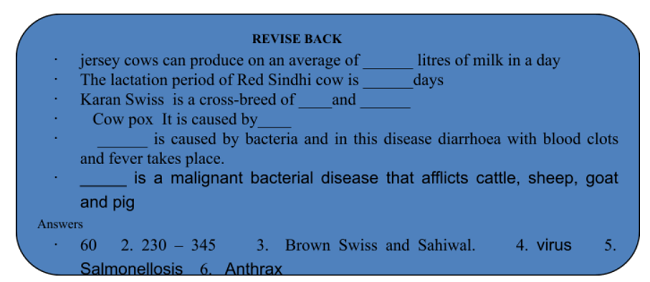
POULTRY FARMING:
Poultry is a class of domesticated fowl used for food and their eggs. The common poultry birds are chickens, turkeys, ducks, geese, pigeons, etc. Eggs and high quality meat serve as cheap sources of animal protein. The tremendous rise in the availability of poultry products is called silver revolution.
Poultry farming includes housing, rearing, sanitation, disease control and marketing of poultry birds and their products. An emphasis is being laid by breeders to improve the egg laying qualities in layers (egg layers) and to improve the quality of meat in broilers.
Poultry breeds
- Indigenous desi breeds: Aseel, Chattisgarh, Burosa and Kadaknath.
- Exotic breeds : White leghorn, Barred plymouth, Black minorca, Rhode island red, Australorp and Light Sussex.
|
Aseel |
Kadaknath |
|
White leghorn |
Rhode island red |
Variety improvement through breeding
Improved breeds of poultry birds is the prime concern of poultry farming which is achieved by cross breeding between indigenous breeds and exotic breeds. The improved varieties are developed for the following desirable traits:
- Number and quality of chicks.
- Dwarf broiler parent for commercial chick production.
- Summer adaptation capacity/tolerance of high temperature.
- Low maintenance requirements.
- Reduction in size of egg-laying bird with ability to utilize more fibrous, cheaper diets formulated using agricultural by-products.
Egg and broiler production:
Good management practices are important for good production of poultry products. A special attention must be given to maintain adequate temperature and hygienic conditions in poultry farms, especially in their housing and feeds. The broilers, however, require some what different nutritional and environmental requirements as compared to egg layers.
|
|
|
|
Broilers |
Layers |
|
S.No. |
Broilers |
Layers |
|
1. |
Broilers are maintained for getting meat. |
Layers are egg-laying birds, managed for the purpose of getting eggs. |
|
2. |
They are raised upto 6-7 weeks in poultry farms and then sent to market for meat purposes. |
Layers start producing eggs at the age of 20 weeks. So they are kept for longer period depending upon laying period (approx. 500 days). |
|
3. |
They require conditions to grow fast and to have low mortality. |
They require enough space and adequate lighting. |
|
4. |
The daily food requirement (ration) for broilers is rich in protein and vitamins A and K. The fat contents should also be adequate. |
They need restricted and calculated feed with vitamins, minerals and micronutrients. |
Diseases of poultry:
Poultry birds suffer from a variety of diseases caused by nutritional irregularities. The common diseases are:
- Viral diseases – bird flu, ranikhet, etc.
- Bacterial diseases – fowl cholera, tuberculosis, etc.
- Arthropod infestations – lice, fleas, ticks, etc.
- Fungal diseases – aspergillosis etc.
A regular check-up is needed and all preventive measures must be taken to control the diseases and pests related with the poultry. Some of the preventive measures :
- Proper cleanliness and sanitation should be maintained.
- Spraying of disinfectants at regular intervals.
- Poor ventilation and dampness should be avoided.
Appropriate vaccination.
FISH PRODUCTION:
Fish is a cheap source of animal protein for our food that is easily digestible. Fish production includes the finned true fish as well as shellfish such as prawns and molluscs.
The process involved in obtaining fish from the source is called fishing, i.e., catching of fish. The two different sources of obtaining fish are:
Natural resources (capture fishery):
There are two natural resources for fishing:
- Marine fisheries : It is the branch of fisheries concerned with obtaining fish from oceans and seas. The fisherman enters into the sea and catches fish by different kinds of fishing nets and gears operated by fishing vessels. Modern equipments include ecosounders and satellites to locate large school of fish in order to increase fish production from the sea.
The common marine fish varieties are:
Pomphrets, Mackerels, Tuna, Sardines, Hilsa, Eel, Bombay duck, etc.
|
Bombay duck |
Tuna |
|
Eel |
Hilsa |
Marine fish varieties
- Inland fisheries: Inland fisheries include capture fishing from fresh water resources like rivers, canals, tanks, ponds, lakes, etc as well as brackish water (saline water from sea mixing with fresh water) resources like estuaries and lagoons.
The common fresh water fish varieties are :
Rohu, Catla, kalbasu, Mrigal, Sanghara, Chital ,etc.
|
Rohu |
Catla |
Fresh water fish varieties
Fish farming (culture fishery):
It is a kind of business and research activity concerned with culturing, feeding, breeding and production of fishes in marine and fresh water ecosystem.
The two categories of fish farming are :
- Mariculture : Culturing of marine fishes in coastal water on commercial basis is called mariculture. It includes sea fish of high economic value such as Mullets, Bhetki, Pearl spots, etc; shell fish such as prawns, Mussels, Oysters, sea weeds, etc. Besides getting sea food, oysters are also cultivated for the pearls. These sea foods have significant economic value and considered high valued food as delicacies.
- Aquaculture : Fish culture in inland / fresh water bodies is called aquaculture. There are several types of fresh water fish culture system.
- (i) Fish culture in cages : Large cages made of bamboo or steel is lowered into fresh water and some special types of fishes are cultured in these cages.
- (ii) Integrated fish culture : The culturing of fish is combined with other agricultural crops (such as paddy, banana, etc)or along with poultry farming so that the excreta of birds is used as food in fish culture ponds. The best integrated fish culture system combines growth of fishes in water of paddy field. The farmer gets benefit of both.
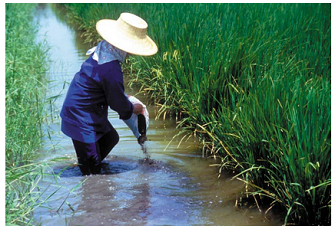
Integrated fish culture
- Composite fish culture systems : In this system a combination of five or six species of fish is cultured in a single fish pond to enhance yield with the same cost and to utilize most of the available food in the water reservoir. Selection of fish is done on the basis of the following characters.
- The selected species are fast growing.
- They do not compete with each other for space and nutrition.
- They live in distinct zone inside the pond. For example, Catla and Silver carp live mostly in the surface zone; Rohu and Grass carp live in the middle zone and Mrigal and Common carp live at the bottom.
- The feeding habits of selected species are distinct. For example, Silver carp feeds on phytoplanktons, Catla feeds on zooplanktons; Rohu and Mrigal feed on decaying plants and detritus, Grass carp feeds on aquatic plants and weeds.
|
Rohu |
Catla |
|
Silver carp |
Grass carp |
|
Common carp |
Mrigal |
Fishes of composite fish culture
There are certain problems in fish farming though it is economical and profitable business.
One major problem is availability of good quality seeds (eggs or spawn) which is only available during the monsoon months. If one tries to obtain seeds from natural sources then there are chances of seeds of desired species getting mixed with those of undesired species.
To overcome this problem, ways have now been worked out to breed these fishes in ponds using hormonal stimulation. This has ensured the supply of pure fish seed in desired quantities.
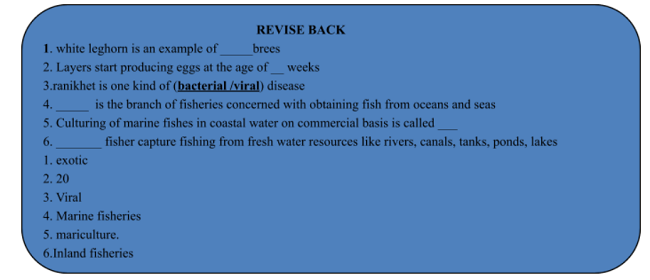
BEE-KEEPING
Bee keeping is concerned with the commercial production of honey and wax. This practice of bee-keeping is called apiculture. Bee keeping is a low investment, less problematic and highly profitable enterprise. Therefore, farmers practice it as an additional source of extra income.
|
|
|
|
An apiary |
Honey collection |
|
Bee keeping |
|
Important products of bee-keeping:
Apiculture provides us with
- Honey : A sweet edible fluid containing sugar, water, mineral (calcium, iron), vitamins, amino acids, enzymes and pollen. It is a direct source of energy, helps in growth of our body and is also a blood purifier.
- Wax : It is secreted by wax glands of worker bees for construction of bee-hive.
- Propolis and poison : They are used in some Ayurvedic and Homeopathic preparations.
Varieties of honey bee used for honey production:
In India, local varieties as well as exotic varieties are used for commercial production of honey. The local varieties are Apis cerenaindica (Indian bee), Adorsata (rock bee) and A. florae (little bee). The exotic variety is Apismellifera (Italian bee variety). The Italian honey bees, Apis mellifera, has been introduced in India to produce honey and wax at commercial level. It is preferred because:
- It is gentle in nature.
- It has high honey collection capacity.
- It stings somewhat less.
- It has more ability to protect itself from enemies.
|
|
Honey bees represent a well organized division of labour. Each colony has 3 distinct castes – (i) one queen (female) producing upto 15,000 egg per day (ii) 10,000 to 20,000 workers (sterile) females (iii) few hundred drones (males) which are heavily built and meant to mate with the queen.
Queen bee Drone bee Worker bee |
Commercial production of honey:
For commercial honey production, bee farms or apiaries are established. Availability of flowering plants for collection of nectar and pollen is called pasturage. It plays a very important role in the quantity and quality of honey. Pasturage of mountains is different from that of plains and the taste of honey depends upon the type of flowers available for pasturage.
Selection of bee variety is another factor playing role in the commercial production of honey. At present the Italian variety is largely used in apiary and it yields an average of 50 to 200 kg of honey per time per year.

